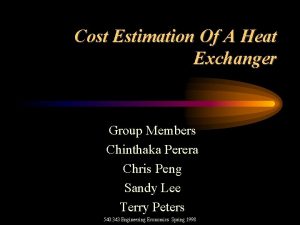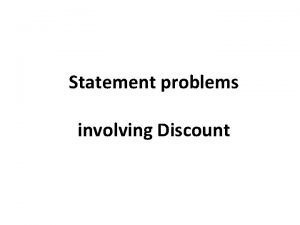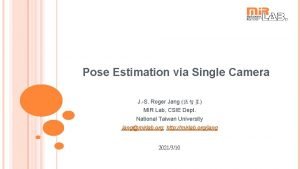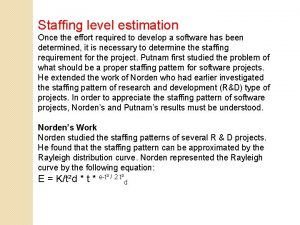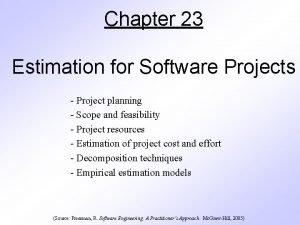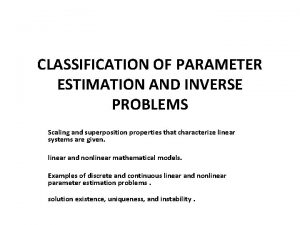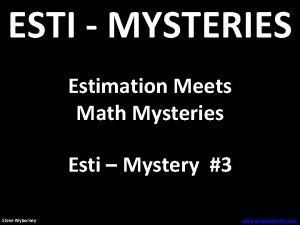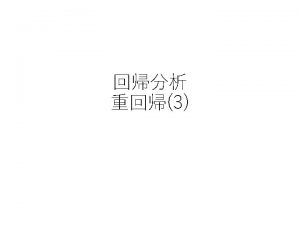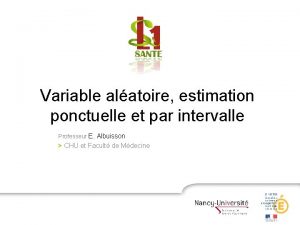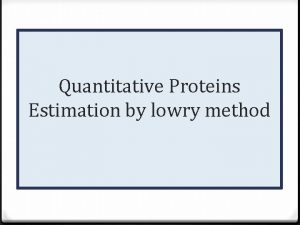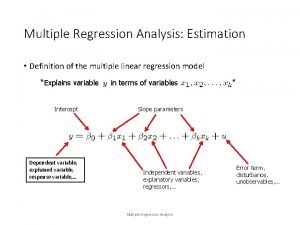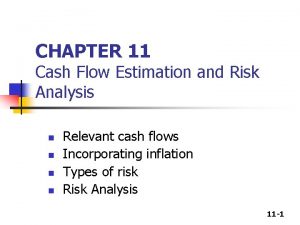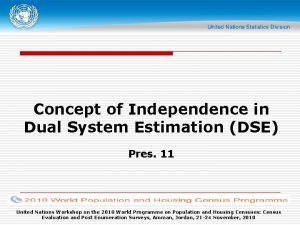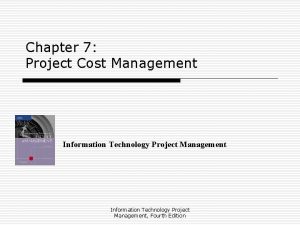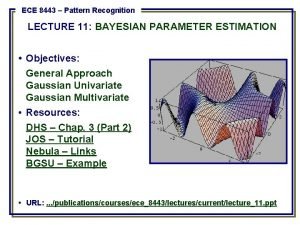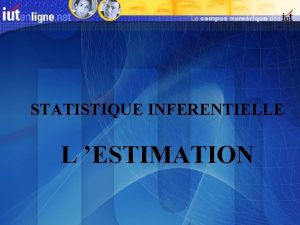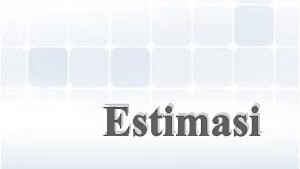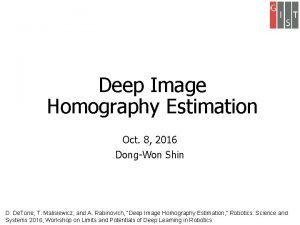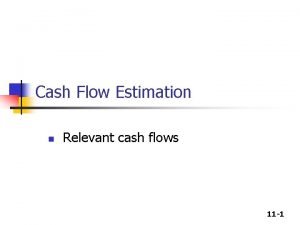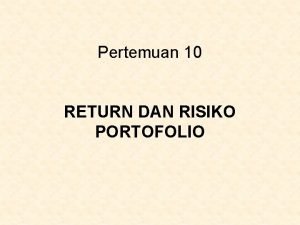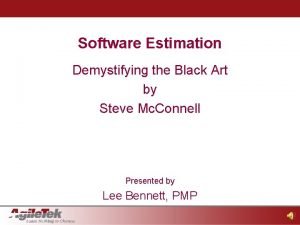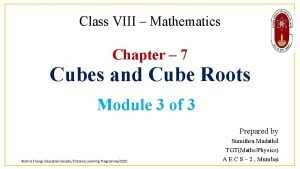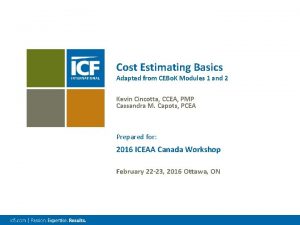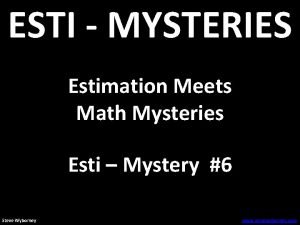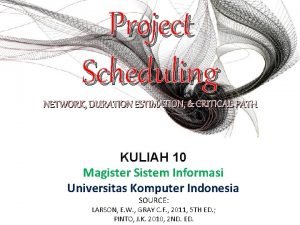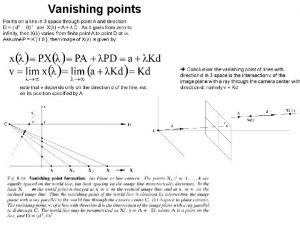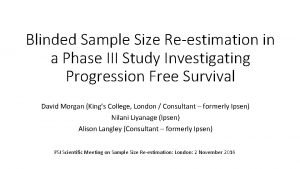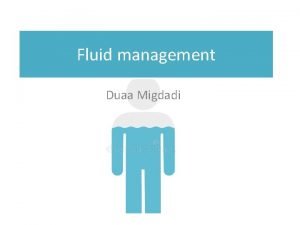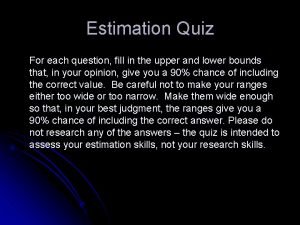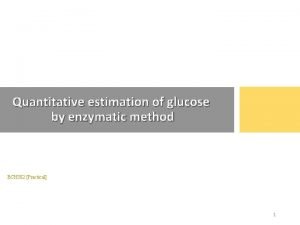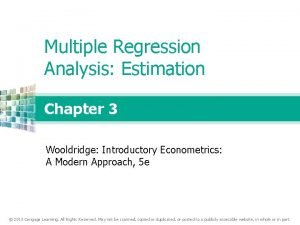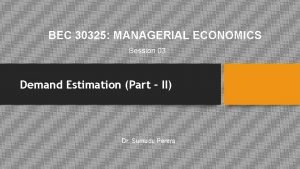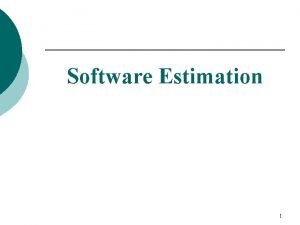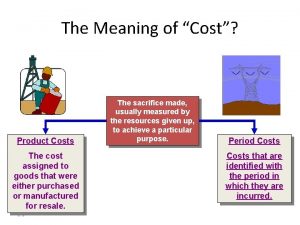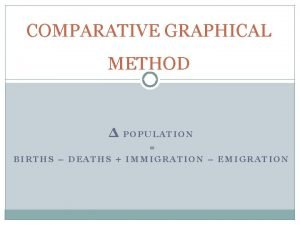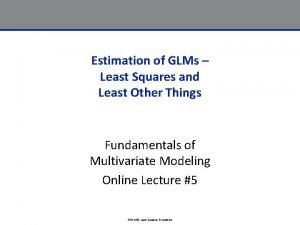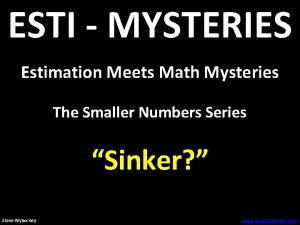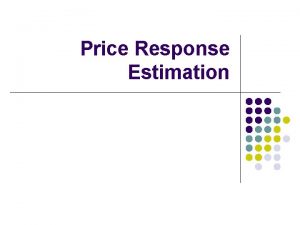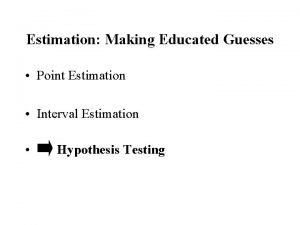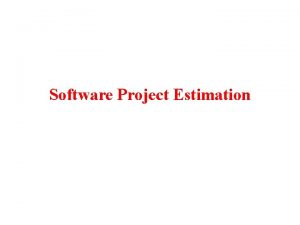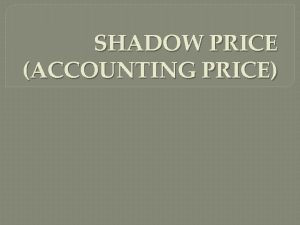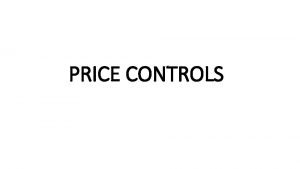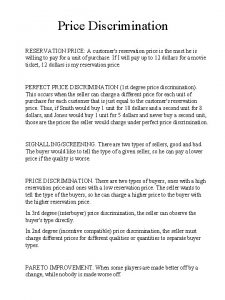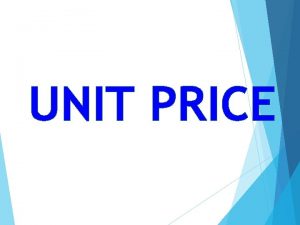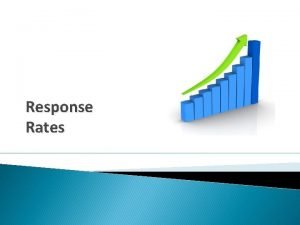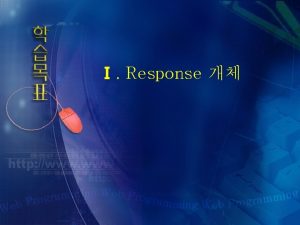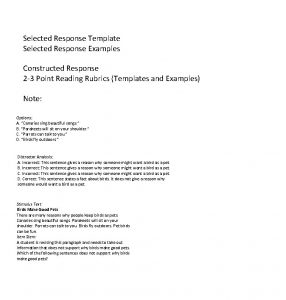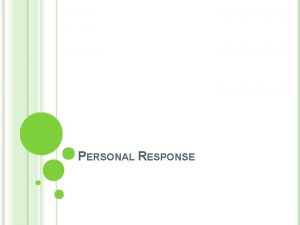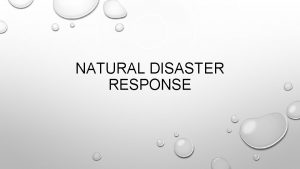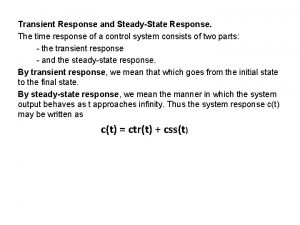Price Response Estimation What is a Price l






































































- Slides: 70

Price Response Estimation

What is a Price? l l Narrowly: price is the amount of money charged for a product or service. Broadly: price is the sum of all the values that the consumers exchange for the benefit of having or using the product or service.

Pricing Mechanism l l l Throughout most of history, prices were set by negotiation between buyers and sellers. At the end of 19 th century, the development of large-scale retailing → fixed price policies, i. e. setting one price for all buyers. At the end of 20 th century, the Internet → dynamic pricing, i. e. charging different prices depending on individual customers and situations.

Case: Priceline l l l Its customer base has grown to almost 17 million users, and as many as 9 million people visit the Priceline site monthly (64% are repeat customers). Working mechanism Attractive to the “time sensitivity” product such as travel-related products (e. g. plane tickets, hotel rooms, rental cars, cruises, and vacation packages).

Dynamic Pricing on the Web l Sellers can l l l charge lower prices, reap higher margins, e. g. Dell’s “made-to-order”. monitor customer behavior and tailor offers to individuals, e. g. Amazon. charge prices on the fly according to changes in demand or costs, e. g. online catalog retailers.

Dynamic Pricing on the Web l Buyers can l l l get instant price comparisons from thousands of vendors, e. g. Compare. Net, Price. Scan. com, and 手機王. find and negotiate lower prices. Both sellers and buyers can negotiate prices in online auctions and exchanges. l E. g. 阿里巴巴.



Markup pricing l l l Add a standard markup to the product’s cost. Reasons: (1) sellers are more certain about costs than about demand; (2) price competition can be minimized; (3) fairer to both buyers and sellers. Make sense?











Case: Kodak






Case: Lion

Case: Lion


















Inelastic and Elastic Demand






The Dorfman-Steiner Condition l l l The firm is a monopoly. Demand function: Q(P, A), where P is the price and A is the advertising expenditure. Profit function: Π = (P – C)Q(P, A) – A, where C is the marginal production cost. εP: the price elasticity of demand; εA: the advertising elasticity of demand. In the equilibrium, A/Sales = εA/εP.

影響價格彈性的其他因素 l Influence of the Internet on price sensitivity l l The Internet has increased customers’ price sensitivity, e. g. mysimon. com, 手機王. Mckinsey’s study found that there is less pricecomparison shopping taking place on the Internet than is possible: 89% (book), 84% (toy) and 81% (music).

影響價格彈性的其他因素 l l l Asian consumers generally tend to be highly price sensitive and are pragmatic shoppers. One study in south California found that Chinese consumers engaged in more information search on products and prices than U. S. consumers. Price indifference band: 17% (mouthwash), 13% (batteries), 9% (small appliance), and 2% (certificates of deposit).

Consumer Research l l l l Ways of contact Survey research In-depth interviews Focus group Observation research Ethnographic research Diaries Other qualitative methods

Ways of Contact l l Mail: not biased or distorted by interviewers, simple and clearly worded question, low response rate. Telephone: quick, interactive, higher response rate than mail. Personal interview: most versatile, expensive and require more administrative planning and supervision. Online interview: convenient.

Survey Research l l Learn about people’s knowledge, beliefs, preferences, and satisfaction, and to measure these magnitudes in the general population. Best suited for descriptive research Major advantage – flexibility, e. g. Bissell’s Steam’n Clean. Limitations – subject’s language, privacy, incapability, boasting, or cooperation.

In-Depth Interviews l l An in-depth interview is a qualitative method conducted one-on-one using open-ended questions that require the respondents to generate their own answers. The primary difference between an interview and a survey is the interview’s use of an unstructured questionnaire.

Focus Group Research l l l A focus group is a gathering of 6 to 10 people who are invited to spend a few hours with a skilled moderator to discuss a product, service, organization, or other marketing entity. Useful exploratory step Avoid generalizing the reported feelings of the focus-group participants to the whole market.

Focus group research in progress

Outline of Focus Group Interview

Friendship Focus Group l l l Friendship focus group is used in a comfortable setting, usually people’s homes, where the participants have been recruited by the host. This approach is designed to break down barriers and save time in getting to more indepth responses. A self-constructed friendship group was easier to assemble and yielded more honest and candid response.

Observation Research l l Observation research takes researchers into natural settings where they note the behavior of consumers using video, audio, and disposable cameras to record consumers’ behavior at home (with consumer consent), in stores, or wherever people buy and use their products. A market will often use observation in the aisles of grocery, drug, and discount stores to watch people making their product selection.

Examples of Observation Research l l Shoppers often zip through the snack aisle, spending only 42. 7 seconds there, whereas they spend more than twice that in the coffee aisle. Only 34% of shoppers who don’t have baskets actually purchase something, while 75% of shoppers with baskets buy some items. A woman who shops with another woman spends twice as much time in the store than if she shops with a man. Basha’s Market’s greeting cards – 18% → 62% and sales↑ 40%.

Observational Research Fisher-Price set up an observation lab in which it could observe the reactions of little tots to new toys.

Ethnographic Research l l l Ethnographic research involves the researcher in living the lives of the people being studied. Observe consumers in their “natural environments. ” Examples: Sunbeam’s Coleman Grill; Once. Famous.

Once. Famous l l A unique ethnographic laboratory for studying consumer behavior in a natural setting. Some interesting results: man (e. g. Brookstone, Sharper Image) vs. woman (e. g. Pottery Barn); cool colors vs. warm colors; turn left vs. turn right.

Diaries l l Consumers are asked to record their activities through the use of diaries. Pros: (1) catch the consumer in a more realistic, normal life pattern; (2) lead to re-creation of a day in the life of a consumer. It is valuable in media research because they tell media planners exactly what programs and ads the consumers watch. Beeper diaries are used as a way to randomize the recording of activities.

Other Qualitative Methods l l l Cognitive psychologist have learned that human beings think more in images than words. Researchers try through pictures to uncover mental processes that guide consumer behavior. Some scholars believe that the conventional wisdom about consumer research, such as using interviews and focus groups that rely on talking to people and grilling them about their tastes and buying habits, is only good for getting back predictable answers.

Other Qualitative Methods l Methods: l l l l Fill-in-the-Blanks (填空) Purpose-driven Games (目的導向的遊戲) Story elicitation (說故事) Artifact creation (居家事物的描繪), e. g. life collages (生活拼 湊), day mapping (一天生活描述), and construction of instruction books (指導手冊的建構). Photo elicitation (看圖說故事) Photo sorts (照片分類) Metaphors (隱喻)

 Upang mapatatag ang presyo sa pamilihan ipinatutupad ang
Upang mapatatag ang presyo sa pamilihan ipinatutupad ang Shell and tube heat exchanger cost estimation
Shell and tube heat exchanger cost estimation A subsequent
A subsequent Natural response and forced response
Natural response and forced response Natural response circuit
Natural response circuit Define strategic sourcing
Define strategic sourcing Price discovery and price determination
Price discovery and price determination Marked price-selling price=
Marked price-selling price= Installment
Installment Phase estimation algorithm
Phase estimation algorithm Pose estimation
Pose estimation Staffing level estimation
Staffing level estimation Motion estimation algorithms
Motion estimation algorithms Process based estimation
Process based estimation Parameter estimation and inverse problems
Parameter estimation and inverse problems Objectives of cost estimation
Objectives of cost estimation Fluorimetric analysis is used in estimation of *
Fluorimetric analysis is used in estimation of * Estimation mysteries
Estimation mysteries Post estimation test
Post estimation test What is the first activity in software project planning
What is the first activity in software project planning Software cost estimation notes
Software cost estimation notes One and two sample estimation problems
One and two sample estimation problems Sahli method procedure
Sahli method procedure Estimation ponctuelle
Estimation ponctuelle Estimating the degradation function
Estimating the degradation function Spray dryer cost estimation
Spray dryer cost estimation Quantitative estimation of protein by lowry method
Quantitative estimation of protein by lowry method Ols linear regression
Ols linear regression Cash flow estimation and risk analysis
Cash flow estimation and risk analysis Structural steel fabrication cost estimation xls
Structural steel fabrication cost estimation xls Work breakdown structure test estimation technique
Work breakdown structure test estimation technique Dual system estimation
Dual system estimation Winkler method
Winkler method Surveyor pro project cost estimate
Surveyor pro project cost estimate Bayesian parameter estimation in pattern recognition
Bayesian parameter estimation in pattern recognition Fannings formula
Fannings formula Estimer une proportion à partir d'un échantillon
Estimer une proportion à partir d'un échantillon Contoh soal estimasi interval
Contoh soal estimasi interval Estimation of residential building
Estimation of residential building Deep image homography estimation
Deep image homography estimation Maximum a posteriori estimation for multivariate gaussian
Maximum a posteriori estimation for multivariate gaussian Relevant cash flows
Relevant cash flows Efficient estimation of word representation in vector space
Efficient estimation of word representation in vector space Risiko portofolio adalah
Risiko portofolio adalah Software estimation demystifying the black art
Software estimation demystifying the black art Quantitative estimation of amino acids by ninhydrin method
Quantitative estimation of amino acids by ninhydrin method Find the cube root of 110592 by prime factorization method
Find the cube root of 110592 by prime factorization method Rna estimation by orcinol method
Rna estimation by orcinol method What is demand estimation in managerial economics
What is demand estimation in managerial economics Marketing research approaches to demand estimation
Marketing research approaches to demand estimation H s cp estimation module
H s cp estimation module Esti mysteries
Esti mysteries Project duration example
Project duration example Ground plane estimation
Ground plane estimation Hemoglobin principle
Hemoglobin principle Blinded sample size re-estimation
Blinded sample size re-estimation Calculate fluid deficit
Calculate fluid deficit Estimate quiz questions
Estimate quiz questions Process based estimation example
Process based estimation example Quantitative estimation of glucose by which method
Quantitative estimation of glucose by which method Multiple regression analysis estimation
Multiple regression analysis estimation Demand estimation in managerial economics
Demand estimation in managerial economics Software estimation demystifying the black art
Software estimation demystifying the black art The that cost
The that cost Curvilinear method population estimation
Curvilinear method population estimation Demand estimation and forecasting
Demand estimation and forecasting Steve wyborney estimation clipboard
Steve wyborney estimation clipboard Epsy
Epsy Steve wyborney estimation clipboard
Steve wyborney estimation clipboard State estimation in power system
State estimation in power system Estimation mysteries
Estimation mysteries

